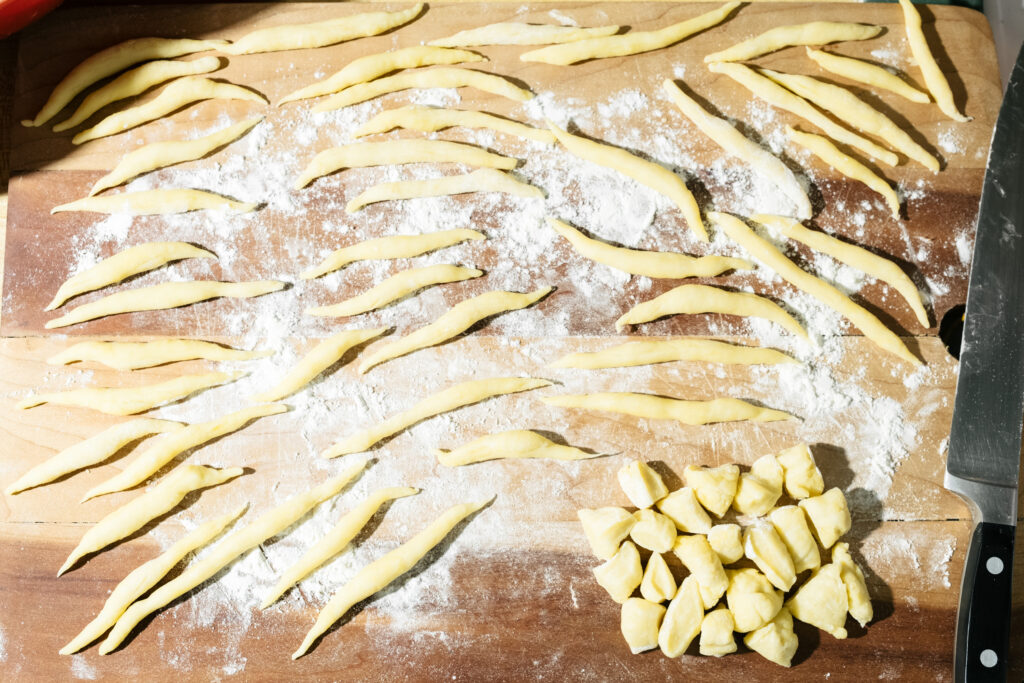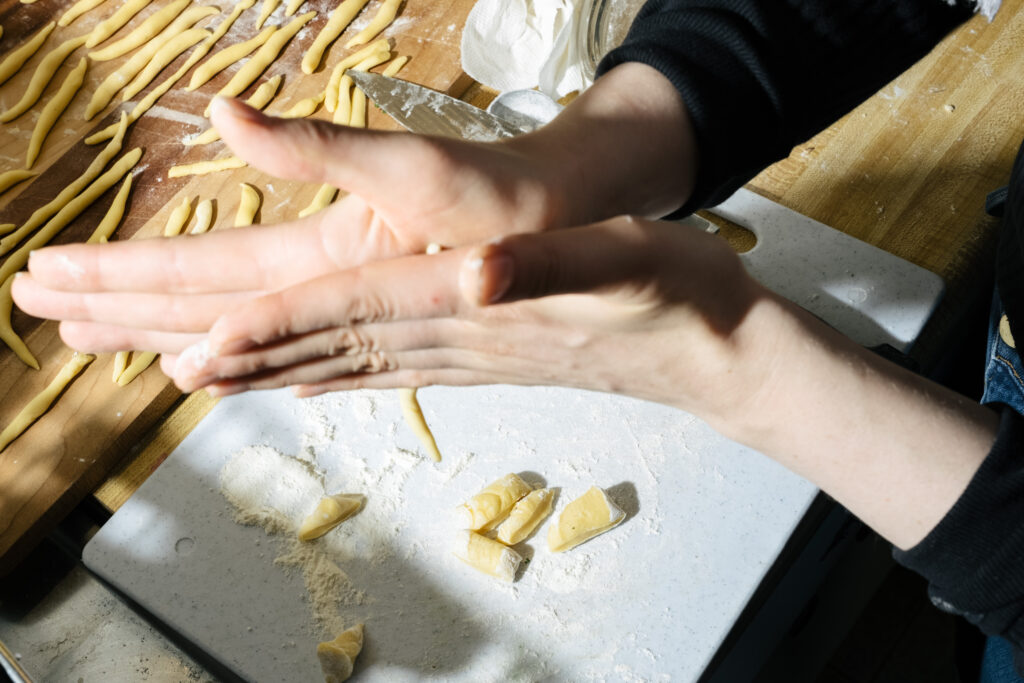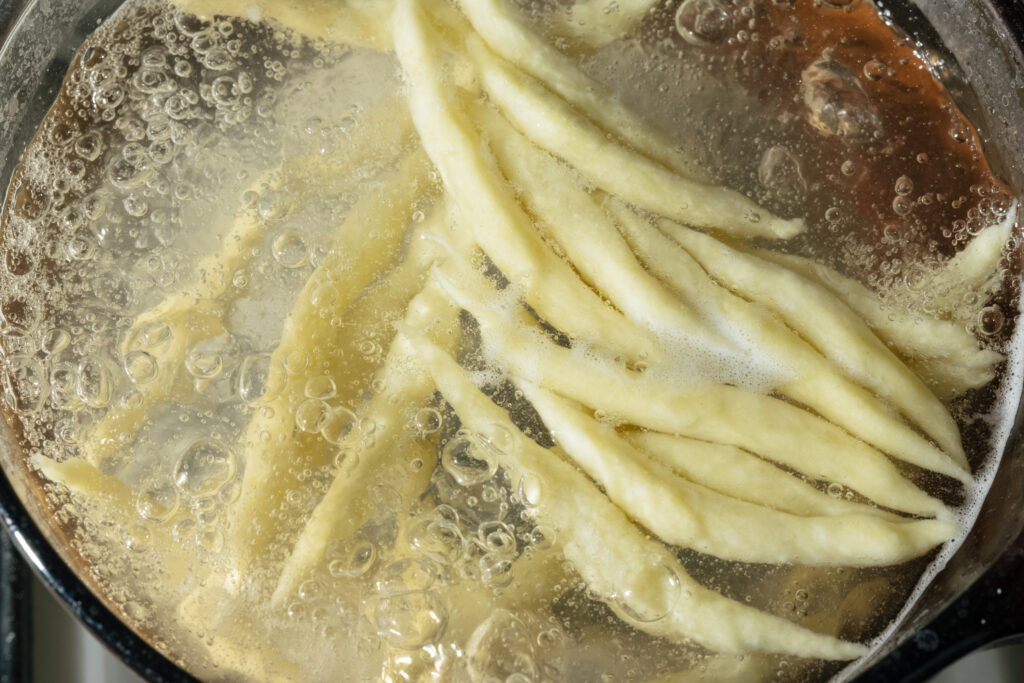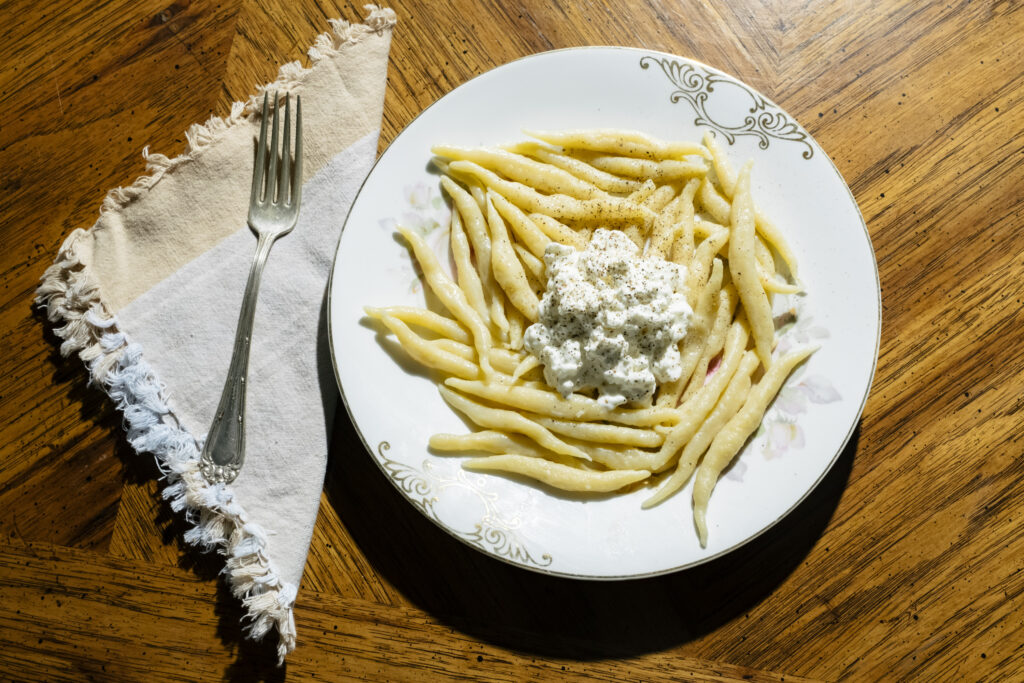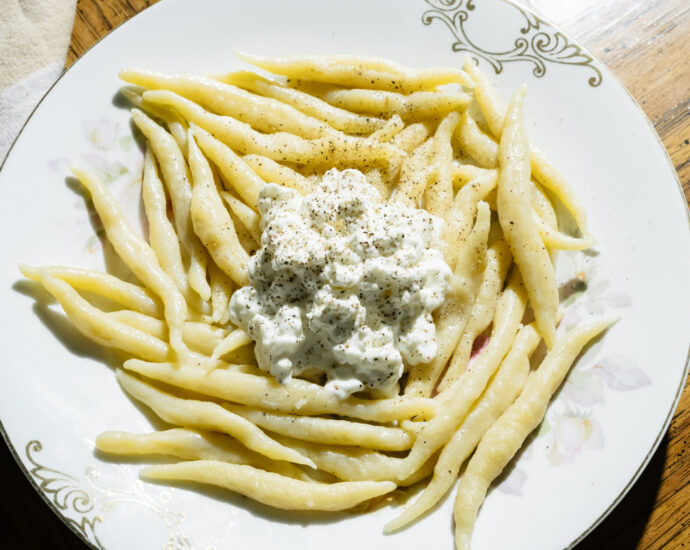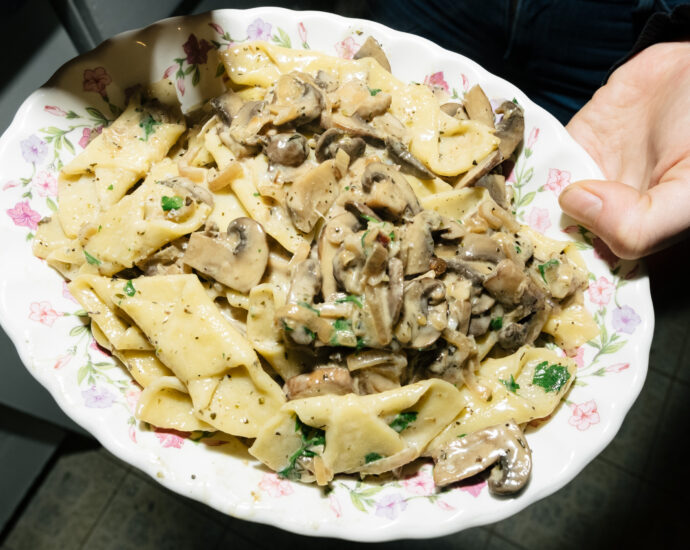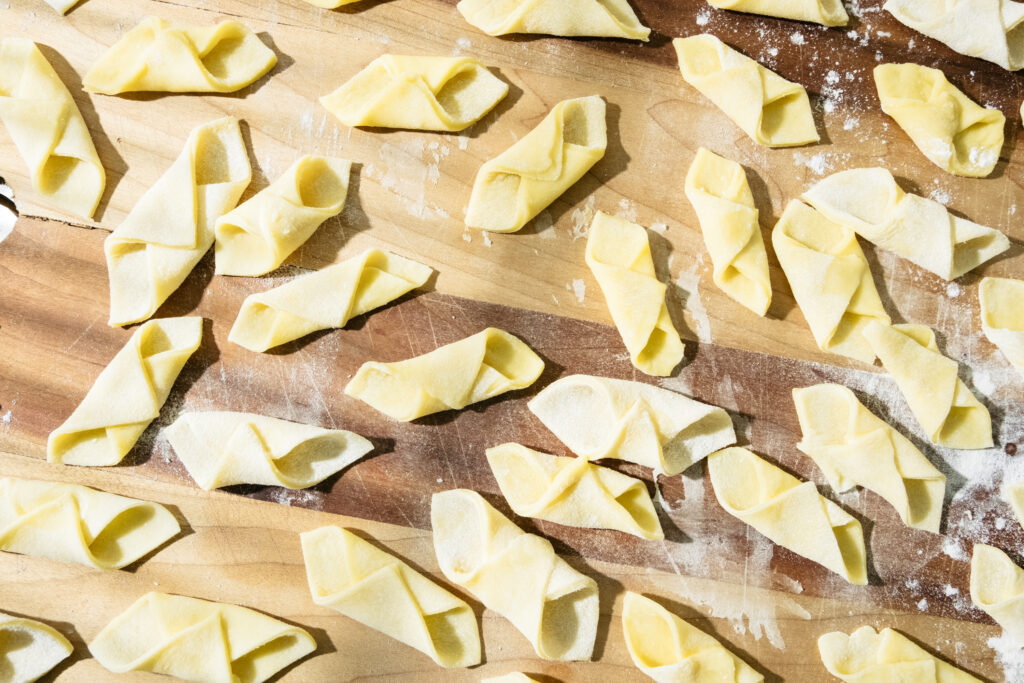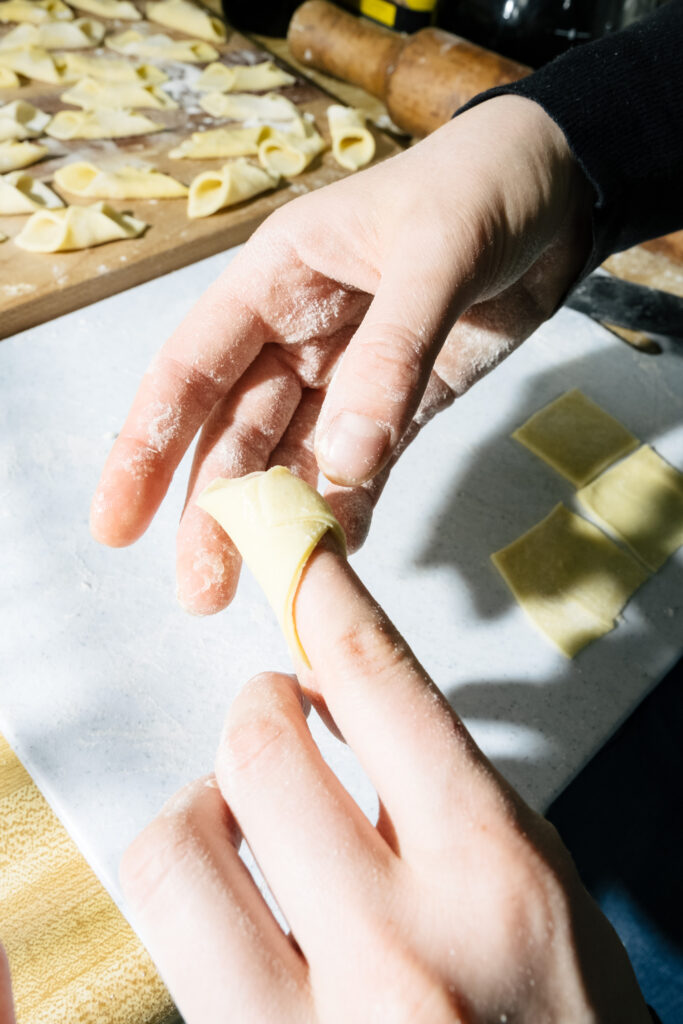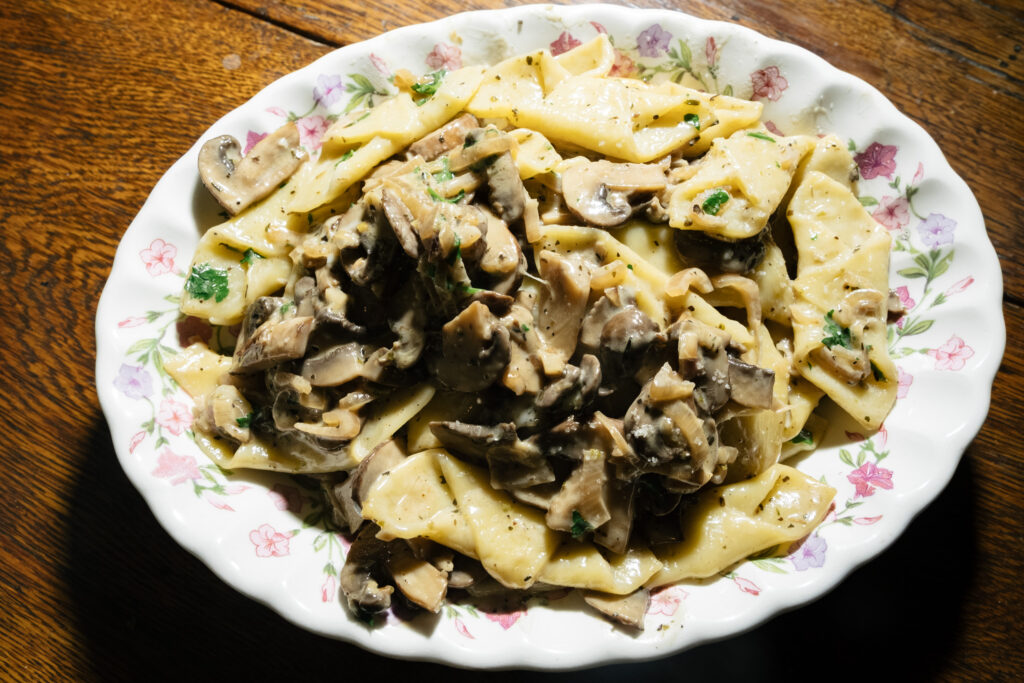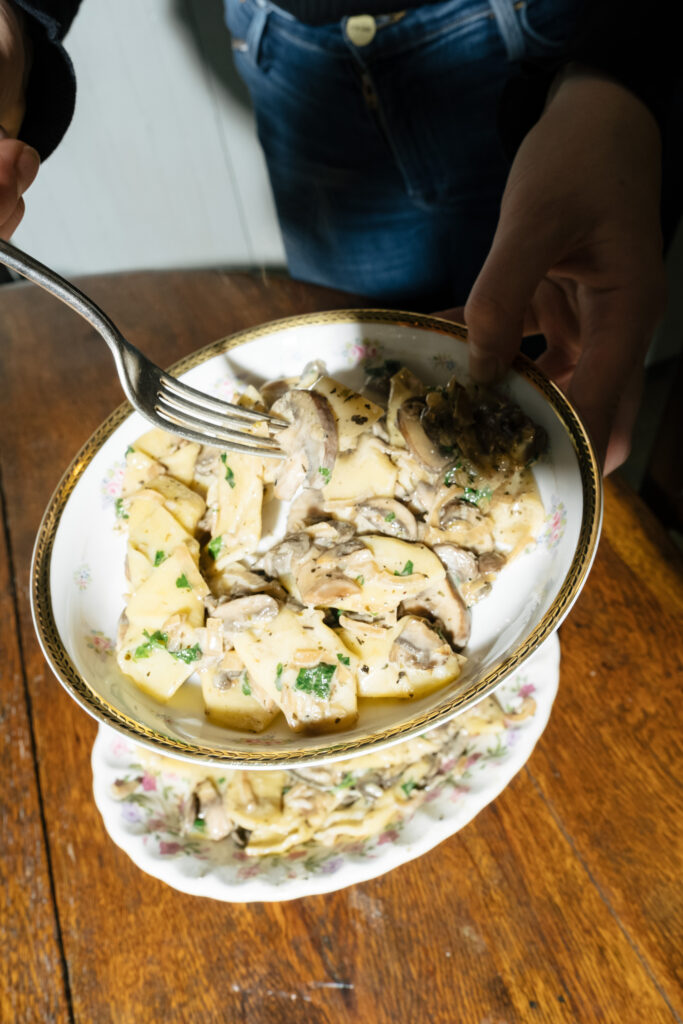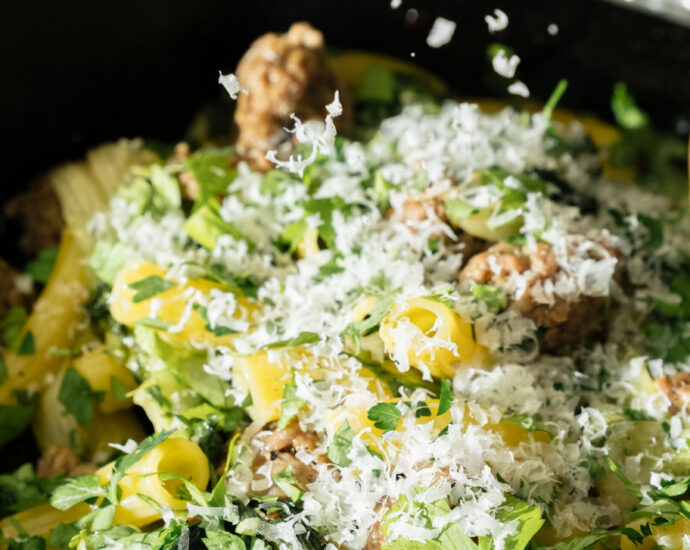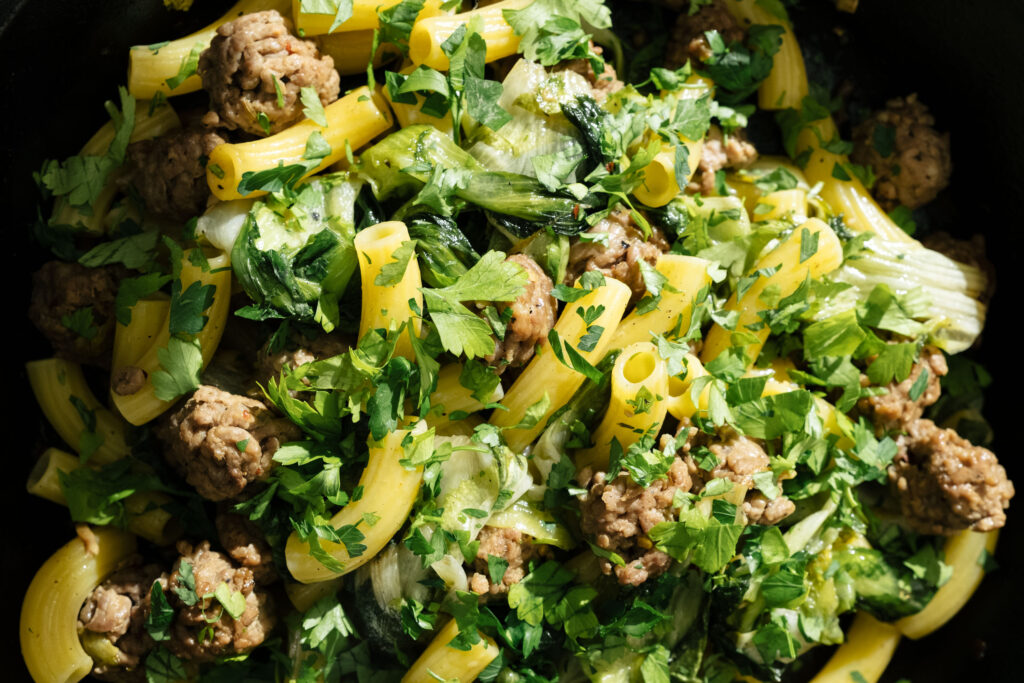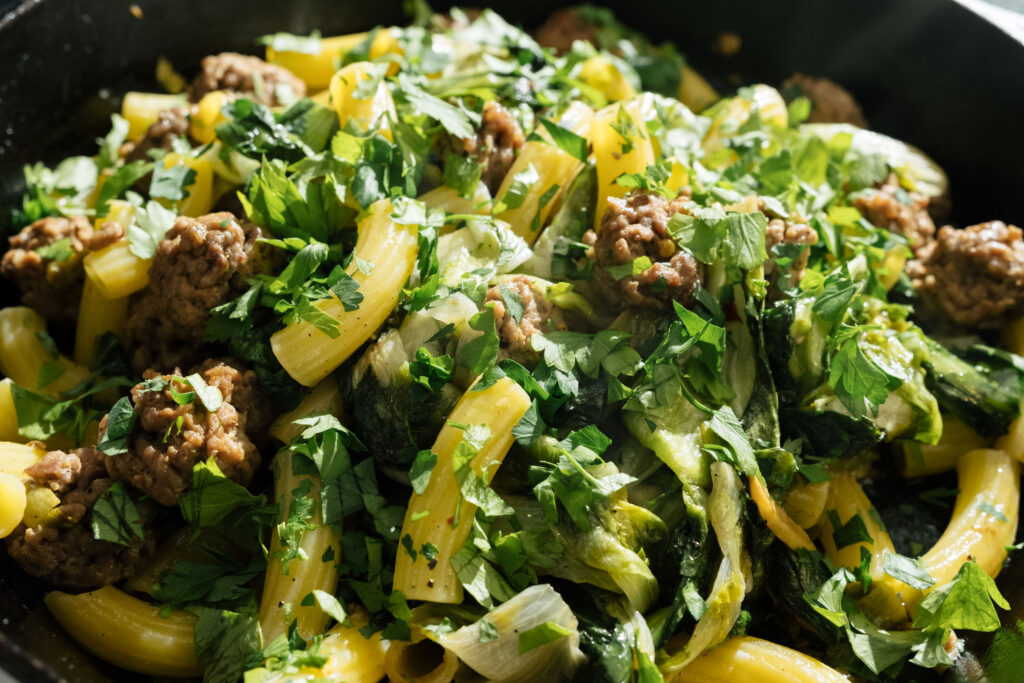pljukanci
Growing up, my grandma used to make us the most simple and delicious dish which she called “cheese noodles,” and which my sister called “cheese noo-noo.” They were literally that – wavy egg noodles with cottage cheese, served warm, occasionally with a pat of butter. Pljukanci is a Croatian noodle similar to the classic egg noodle of my youth; it certainly elicits that warm and cozy familiarity for me which cheese noodles evoke.
Pljukanci (prono: ple-oo-kantsi) is a hand-rolled Croatian pasta, made by rolling small pieces of dough between the palms of your hands or on a clean surface. The shape tapers at the ends and is thicker in the middle, giving it a nice chewy texture. Pljukanci can be served with a variety of sauces, but here, I re-create one of my childhood favorites – my grandma’s cheese noodles.
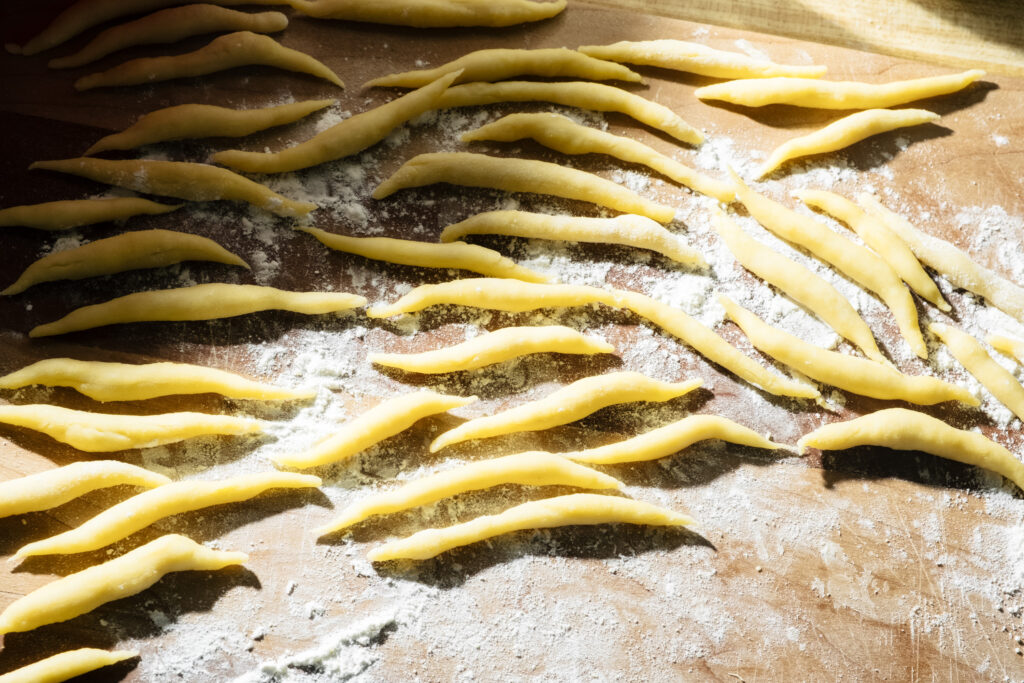
ingredients
for the pljukanci dough
- 1 cup soft wheat (tipo “00”) flour
- 1 egg
- 1 tablespoon olive oil
- 3 tablespoons warm water
- Pinch of salt
- All purpose flour for rolling out dough
for assembly and serving
- 1 tablespoon butter
- 1 cup (8 ounces) of whole milk cottage cheese
steps
Place the flour in the bowl of a stand mixer with the dough hook, food processor, or a large bowl if you prefer to knead by hand. Make an indent in the center of the flour and add the egg, oil, water, and salt. Mix and knead the dough until it is evenly combined not too sticky, about 5-7 minutes.
Cover the dough in plastic wrap and refrigerate the dough for an hour. Cut into pieces the size of almonds and roll each piece between your palms or on a clean surface. Taper the edges by rolling the ends out more and keeping the middle of the noodles thicker.
Bring a large pot of salted water to a boil and cook the pljukanci for about 5 minutes. Remove from the water, strain, and add butter.
